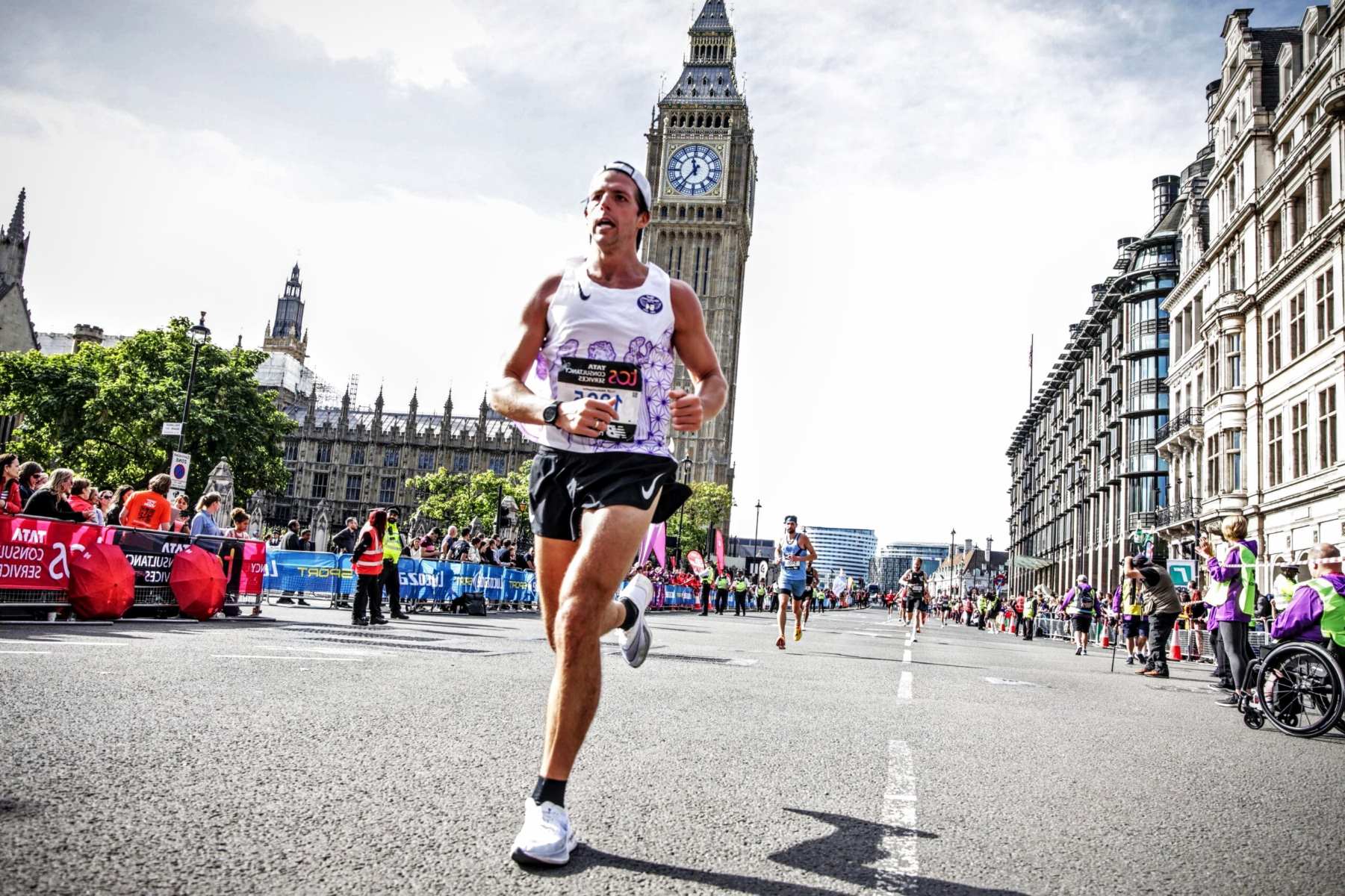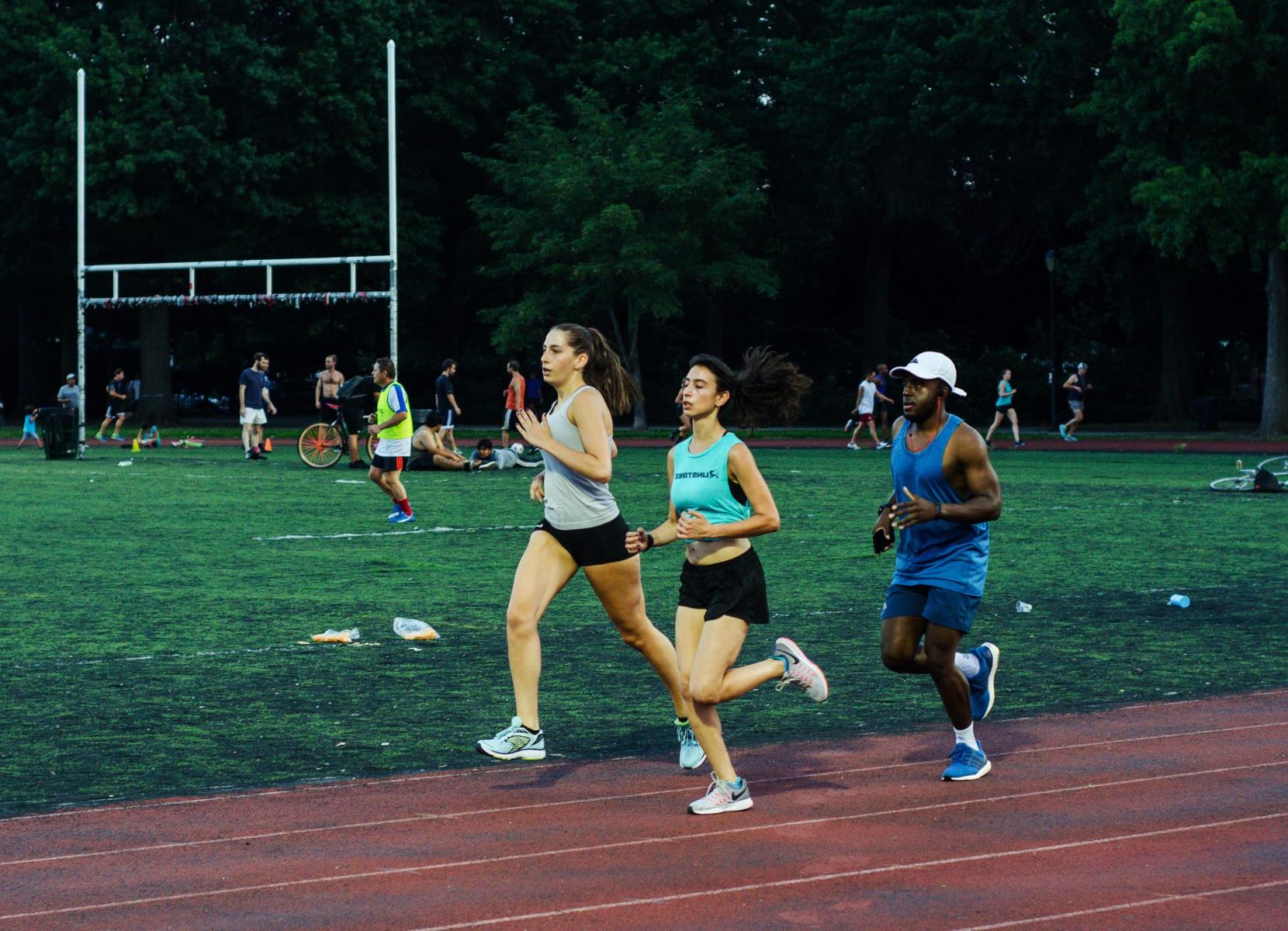Home>Training & Techniques>10 Essential Tips For Successfully Completing A 10K Run


Training & Techniques
10 Essential Tips For Successfully Completing A 10K Run
Published: February 27, 2024
Discover 10 essential tips for successfully completing a 10K run, including training and techniques to help you achieve your running goals. Unlock the secrets to a successful 10K race!
(Many of the links in this article redirect to a specific reviewed product. Your purchase of these products through affiliate links helps to generate commission for Therunningadvisor.com, at no extra cost. Learn more)
Table of Contents
Setting realistic goals
Setting realistic goals is the first step towards successfully completing a 10K run. It's essential to establish achievable objectives that align with your current fitness level and running experience. By doing so, you can avoid unnecessary stress and reduce the risk of injury while making steady progress toward your ultimate goal.
When setting your goals, consider factors such as your current level of fitness, any previous running experience, and the amount of time you have available for training. It's important to be honest with yourself about your abilities and limitations, as this will help you create a plan that is both challenging and attainable.
A realistic goal for a beginner might be to complete the 10K run without stopping, while a more experienced runner might aim for a specific finishing time. By tailoring your goals to your individual circumstances, you can stay motivated and focused throughout your training.
In addition to considering your current fitness level, it's important to take into account any external factors that may impact your training, such as work commitments, family responsibilities, or other hobbies. By setting realistic goals that accommodate these factors, you can create a training plan that fits seamlessly into your lifestyle, increasing the likelihood of success.
Furthermore, setting realistic goals allows you to track your progress more effectively. As you achieve each milestone, you'll gain confidence and momentum, which can be incredibly motivating as you work toward your ultimate objective of completing the 10K run.
In summary, setting realistic goals is the foundation of a successful 10K training plan. By taking into account your current fitness level, personal circumstances, and external commitments, you can establish achievable objectives that will keep you motivated and on track throughout your training journey.
Choosing the right training plan
Selecting the right training plan is crucial for preparing effectively and safely for a 10K run. With numerous training programs available, it's essential to find one that aligns with your current fitness level, running experience, and overall goals. Here are some key considerations to keep in mind when choosing the right training plan:
-
Assess Your Fitness Level: Before selecting a training plan, honestly evaluate your current fitness level and running experience. If you're a beginner, look for programs designed for novice runners, focusing on gradually building endurance and strength. For more experienced runners, intermediate or advanced training plans that incorporate speed work and longer distances may be more suitable.
-
Consider Time Commitment: Take into account your schedule and the time you can dedicate to training. Some plans may require more frequent and longer workouts, while others offer flexibility for those with busy lifestyles. Choosing a plan that fits comfortably into your routine increases the likelihood of consistency and adherence.
-
Gradual Progression: Look for a training plan that emphasizes gradual progression. It should include a mix of running, cross-training, and rest days to prevent overtraining and reduce the risk of injury. A well-structured plan will gradually increase mileage and intensity, allowing your body to adapt and improve without excessive strain.
-
Incorporate Variety: A good training plan incorporates a variety of workouts, including long runs, tempo runs, interval training, and recovery runs. This diversity helps improve overall fitness, endurance, and speed while preventing monotony and burnout.
-
Expert Guidance: Consider seeking guidance from experienced runners, coaches, or reputable running resources when selecting a training plan. Their insights can help you identify a program that suits your individual needs and goals, ensuring a more personalized and effective training experience.
-
Adaptability: Look for a plan that can be adapted to accommodate unexpected events, such as illness, injury, or changes in schedule. Flexibility within the plan allows for adjustments without derailing your overall progress.
-
Listen to Your Body: Finally, choose a plan that encourages listening to your body and adjusting workouts based on how you feel. It's important to recognize signs of fatigue, soreness, or excessive stress and make necessary modifications to prevent overexertion and injury.
By carefully considering these factors, you can select a training plan that not only prepares you physically for the 10K run but also aligns with your lifestyle and individual needs. This thoughtful approach sets the stage for a successful and enjoyable training journey, ultimately leading to a rewarding 10K race experience.
Proper nutrition and hydration
Proper nutrition and hydration play a pivotal role in the successful completion of a 10K run. Fueling your body with the right nutrients and maintaining adequate hydration levels are essential for optimizing performance, enhancing recovery, and reducing the risk of fatigue and injury.
Balanced Diet
A balanced diet rich in carbohydrates, lean proteins, healthy fats, vitamins, and minerals is fundamental for supporting the increased energy demands of training for a 10K run. Carbohydrates serve as the primary fuel source for endurance activities, making it crucial to include complex carbohydrates such as whole grains, fruits, and vegetables in your daily meals. Additionally, lean proteins aid in muscle repair and recovery, while healthy fats provide sustained energy and support overall health.
Pre-Run Nutrition
Prior to a training run or race, it's important to consume a light meal or snack that combines carbohydrates and a moderate amount of protein. This can help top up glycogen stores and provide a readily available energy source. Opt for easily digestible options such as a banana with nut butter, a small bowl of oatmeal, or a whole grain toast with a lean protein source.
Read more: Mastering The Art Of Running A Flawless 10K
Hydration
Maintaining proper hydration is critical for optimal performance and overall well-being. Dehydration can lead to decreased endurance, muscle cramps, and impaired cognitive function. It's essential to drink an adequate amount of water throughout the day and especially before, during, and after training sessions. During longer runs, consider incorporating electrolyte-rich beverages or gels to replenish sodium and other essential minerals lost through sweat.
Post-Run Recovery
After completing a training run, focus on replenishing glycogen stores and supporting muscle recovery by consuming a balanced post-run meal or snack. This should include a combination of carbohydrates and protein to aid in muscle repair and replenish energy stores. Additionally, staying hydrated post-run is crucial for facilitating the body's recovery processes.
Nutritional Supplements
While a well-rounded diet should be the primary source of nutrients, some runners may benefit from specific supplements to address individual needs. It's important to consult with a healthcare professional or a registered dietitian to determine if supplements such as iron, vitamin D, or omega-3 fatty acids are necessary to support overall health and performance.
By prioritizing proper nutrition and hydration, runners can optimize their training, enhance their race-day performance, and promote overall well-being. A well-fueled body is better equipped to handle the physical demands of a 10K run, allowing runners to achieve their goals while maintaining a strong and resilient physique.
Finding the right running shoes
Selecting the right running shoes is a critical decision for any runner, especially when preparing for a 10K run. The proper footwear not only enhances comfort and performance but also reduces the risk of injuries. Here are essential factors to consider when finding the right running shoes:
Understanding Your Foot Type
Before purchasing running shoes, it's crucial to understand your foot type. The three common foot types are neutral, overpronated, and underpronated (supinated). A simple way to determine your foot type is by conducting a wet test, where you wet your foot and step onto a piece of paper to observe the shape of your footprint. This knowledge will guide you in selecting shoes with the appropriate level of arch support and cushioning.
Shoe Fitting and Comfort
When trying on running shoes, pay attention to the fit and comfort. Your toes should have enough room to wiggle, and the shoe should securely hold your heel without causing any discomfort or slippage. It's advisable to shop for running shoes later in the day when your feet are slightly swollen, mimicking the conditions during a run. This ensures that you choose a size that accommodates potential foot expansion during exercise.
Running Shoe Categories
Running shoes are typically categorized based on their intended use and foot mechanics. Neutral shoes are suitable for runners with normal pronation, providing balanced cushioning and support. Stability shoes are designed for mild to moderate overpronators, offering additional arch support and cushioning. Motion control shoes cater to severe overpronators, featuring reinforced support to minimize excessive inward rolling of the foot.
Terrain and Running Surface
Consider the terrain and running surface for which the shoes will be primarily used. If you plan to train on trails, opt for trail running shoes with enhanced traction and protection. For road running, select shoes designed for pavement and asphalt, prioritizing cushioning and responsiveness.
Professional Gait Analysis
Seeking a professional gait analysis at a specialty running store can provide valuable insights into your running mechanics and foot strike pattern. This analysis helps in identifying any gait abnormalities and assists in selecting the most suitable running shoes tailored to your individual needs.
Budget and Longevity
While it's important to invest in quality running shoes, it's also essential to consider your budget. Quality shoes may come with a higher price tag, but they offer durability and performance benefits that justify the investment. Keep in mind that running shoes typically have a lifespan of 300-500 miles, after which their cushioning and support diminish, necessitating replacement.
By carefully considering these factors and seeking expert guidance when necessary, you can find the right running shoes that complement your running style, foot mechanics, and training needs. The right pair of running shoes not only enhances comfort and performance but also contributes to a safer and more enjoyable running experience, ultimately supporting your journey to successfully complete a 10K run.
Incorporating strength training
Incorporating strength training into your 10K run preparation can significantly enhance your overall performance, reduce the risk of injuries, and promote long-term running success. While running primarily targets the cardiovascular system and lower body muscles, strength training focuses on building muscular strength, endurance, and stability, complementing the physical demands of running.
Benefits of Strength Training for Runners
Strength training offers a myriad of benefits for runners, including improved running economy, enhanced muscular power, and increased resistance to fatigue. By targeting specific muscle groups, such as the core, glutes, quadriceps, hamstrings, and calves, strength training helps runners maintain proper running form, especially during the latter stages of a race when fatigue sets in. Additionally, it contributes to better joint stability and overall body alignment, reducing the likelihood of overuse injuries.
Key Principles of Strength Training for Runners
When incorporating strength training into your 10K run preparation, it's essential to focus on exercises that are specifically tailored to benefit your running performance. Key principles to consider include:
-
Functional Movements: Prioritize exercises that mimic the movements and muscle activation patterns involved in running, such as squats, lunges, deadlifts, and calf raises. These movements help strengthen the muscles used during running and improve overall running mechanics.
-
Core Stability: Emphasize core-strengthening exercises to enhance stability and posture, which are crucial for maintaining efficient running form and preventing fatigue-related breakdowns in technique.
-
Balanced Muscle Development: Ensure a balanced approach to muscle development by targeting both the primary running muscles and the supporting muscle groups. This helps prevent muscle imbalances and reduces the risk of overuse injuries.
-
Progressive Overload: Gradually increase the intensity and resistance of strength training exercises over time to continually challenge and improve muscular strength and endurance.
Sample Strength Training Exercises for Runners
-
Bodyweight Exercises: Include bodyweight exercises such as planks, push-ups, and bodyweight squats to build foundational strength and stability.
-
Resistance Training: Incorporate resistance training using free weights, resistance bands, or weight machines to target specific muscle groups and progressively increase strength.
-
Plyometric Exercises: Integrate plyometric exercises like box jumps, jump squats, and bounding to enhance explosive power and improve running efficiency.
-
Functional Movements: Focus on functional movements that engage multiple muscle groups simultaneously, simulating the demands of running and promoting overall athleticism.
Integration into Training Schedule
To effectively incorporate strength training into your 10K run preparation, aim to include 2-3 sessions per week, allowing for adequate recovery between workouts. It's important to schedule strength training sessions on non-running days or after easy runs to minimize interference with running performance and recovery.
By integrating a well-rounded strength training program into your 10K run preparation, you can enhance your running performance, reduce the risk of injuries, and cultivate a strong and resilient body capable of meeting the demands of the 10K race. This holistic approach to training not only supports your immediate running goals but also contributes to long-term athletic development and overall physical well-being.
Rest and recovery
Rest and recovery are integral components of a comprehensive 10K run training plan, playing a crucial role in optimizing performance, preventing overtraining, and reducing the risk of injuries. While the focus is often placed on the physical aspects of training, it's essential to recognize the significance of adequate rest and strategic recovery practices in achieving peak performance on race day.
Importance of Rest
Rest is not simply the absence of physical activity but a deliberate period of time dedicated to allowing the body to repair and adapt to the stress induced by training. During rest periods, the body undergoes essential processes such as muscle repair, glycogen replenishment, and the restoration of hormonal balance. Neglecting adequate rest can lead to diminished performance, increased susceptibility to illness, and a higher risk of overuse injuries.
Recovery Strategies
Incorporating effective recovery strategies into your training plan is essential for maximizing the benefits of rest and promoting overall well-being. Some key recovery strategies include:
-
Active Recovery: Engaging in low-intensity activities such as walking, cycling, or swimming on rest days can enhance blood flow, promote muscle recovery, and alleviate stiffness and soreness.
-
Quality Sleep: Prioritizing adequate and quality sleep is paramount for physical and mental recovery. During sleep, the body undergoes crucial repair processes, including muscle growth, tissue repair, and the release of growth hormones.
-
Nutrition: Consuming nutrient-dense foods that support recovery, such as lean proteins, complex carbohydrates, and healthy fats, is essential for replenishing energy stores and facilitating muscle repair.
-
Hydration: Maintaining proper hydration levels supports physiological functions, aids in nutrient transport, and promotes efficient recovery processes.
-
Foam Rolling and Stretching: Incorporating foam rolling and targeted stretching exercises can alleviate muscle tightness, improve flexibility, and reduce the risk of injury.
Listening to Your Body
Understanding the cues and signals from your body is crucial in determining when to prioritize rest and recovery. It's essential to recognize signs of fatigue, persistent muscle soreness, decreased performance, and changes in mood or motivation, as these may indicate the need for additional rest or a reduction in training intensity.
Periodization and Deloading
Implementing periodization within your training plan, which involves structured variations in training intensity and volume, allows for planned periods of reduced training load to facilitate recovery and prevent burnout. Deloading weeks or phases provide an opportunity for the body to adapt to previous training stimuli, leading to improved performance and reduced injury risk.
Mental Recovery
In addition to physical rest, mental recovery is equally important. Engaging in activities that promote relaxation, stress reduction, and mental rejuvenation, such as meditation, mindfulness practices, or hobbies unrelated to running, can contribute to overall well-being and sustained motivation.
By acknowledging the significance of rest and recovery and integrating effective strategies into your training plan, you can optimize your physical and mental readiness for the 10K run. Embracing rest as a vital component of the training process, rather than a mere absence of activity, is essential for achieving peak performance and long-term running success.
Mental preparation and motivation
Mental preparation and motivation are integral aspects of successfully completing a 10K run. While physical training is crucial, the mental fortitude and psychological readiness play a significant role in overcoming challenges, maintaining focus, and sustaining motivation throughout the training journey and on race day.
One of the key elements of mental preparation is cultivating a positive and resilient mindset. This involves developing the ability to manage pre-race nerves, cope with discomfort during training, and navigate the inevitable highs and lows of the running experience. Adopting a positive outlook and reframing challenges as opportunities for growth can bolster mental resilience and fortify determination.
Visualization and mental imagery are powerful tools for mental preparation. By vividly imagining successful training runs and visualizing crossing the finish line with strength and determination, runners can instill confidence and reduce anxiety. Visualization techniques can also be used to rehearse race strategies, envision overcoming obstacles, and mentally prepare for various race scenarios, thereby enhancing mental readiness and performance.
Setting clear and achievable goals, both short-term and long-term, is essential for maintaining motivation and focus. By establishing specific, measurable, and realistic objectives, runners can track their progress, celebrate milestones, and stay committed to their training regimen. Additionally, breaking down the 10K race into smaller, manageable segments can alleviate feelings of overwhelm and instill a sense of accomplishment with each milestone reached.
Drawing inspiration from personal achievements, as well as the accomplishments of other runners, can fuel motivation and determination. Engaging with the running community, whether through local running groups, online forums, or social media, provides a supportive network that fosters camaraderie, accountability, and shared experiences. Sharing challenges and triumphs with fellow runners can offer valuable encouragement and motivation, reinforcing the sense of belonging to a larger community of like-minded individuals.
Practicing mindfulness and staying present during training runs and race day can help manage stress and anxiety. By focusing on the present moment, acknowledging physical sensations, and maintaining a steady breathing rhythm, runners can cultivate a sense of calm and concentration, enhancing their ability to navigate the mental and physical demands of the 10K run.
In summary, mental preparation and motivation are essential components of a successful 10K run journey. By nurturing a positive mindset, utilizing visualization techniques, setting clear goals, drawing inspiration from the running community, and practicing mindfulness, runners can fortify their mental resilience, sustain motivation, and approach the 10K run with confidence and determination.
Race day strategies
Race day presents a culmination of weeks of dedicated training and preparation, and implementing effective strategies can significantly impact the outcome of the 10K run. As the anticipation builds and the adrenaline surges, runners can benefit from a thoughtful approach to race day that encompasses physical readiness, mental fortitude, and strategic execution.
Pre-Race Preparation
Arriving at the race venue well-prepared and organized sets the stage for a smooth and focused race day experience. This includes ensuring that all essential gear, such as running shoes, attire, hydration, and nutrition, is meticulously arranged the night before. Familiarizing oneself with the race course, including any elevation changes, turns, and water stations, can provide a mental map for strategic pacing and fueling during the run.
Warm-Up Routine
A structured warm-up routine primes the body for the physical demands of the race and minimizes the risk of injury. Dynamic stretching, light jogging, and strides can gradually elevate heart rate, increase blood flow to muscles, and activate the neuromuscular system. Engaging in a warm-up routine tailored to individual preferences and needs can optimize performance and readiness for the start line.
Pacing and Race Strategy
Establishing a well-defined pacing strategy is crucial for maintaining energy reserves and optimizing performance throughout the 10K run. Whether aiming for a consistent pace, negative splits, or strategic surges, runners should align their race strategy with their training experience and fitness level. Additionally, identifying key landmarks or mile markers along the course can serve as mental checkpoints for pacing and progress assessment.
Hydration and Fueling
Strategically planned hydration and fueling during the race are essential for sustaining energy levels and preventing dehydration. Understanding the location of water stations and incorporating a hydration plan that balances fluid intake with individual sweat rates is vital. For longer races, carrying energy gels or snacks can provide a convenient source of fuel to maintain endurance and mental focus.
Mental Resilience
Maintaining mental resilience and focus during the race is paramount for overcoming challenges and pushing through discomfort. Implementing positive self-talk, focusing on breathing rhythm, and drawing motivation from the surrounding energy of fellow runners and spectators can bolster mental fortitude. Embracing the inevitable ebbs and flows of the race with a resilient mindset can contribute to sustained determination and performance.
Post-Race Recovery
Upon crossing the finish line, prioritizing post-race recovery is essential for facilitating muscle recovery and replenishing energy stores. Engaging in light walking, gentle stretching, and rehydration immediately after the race can aid in the transition to a state of recovery. Celebrating the accomplishment and reflecting on the race experience with a sense of gratitude and achievement can further enhance the post-race recovery process.
By meticulously planning and implementing race day strategies that encompass physical, mental, and strategic elements, runners can optimize their performance and experience a rewarding and fulfilling 10K run. Embracing the unique challenges and opportunities presented by race day with a well-prepared and adaptable approach can lead to a memorable and successful race experience.
Listening to your body
Listening to your body is a fundamental aspect of successful 10K run preparation, as it enables runners to understand and respond to the signals and feedback their bodies provide. This practice goes beyond simply acknowledging physical sensations; it involves attuning oneself to the nuanced messages conveyed by the body during training, recovery, and race day. By cultivating a heightened awareness of these signals, runners can make informed decisions that optimize performance, prevent injuries, and promote overall well-being.
One of the primary aspects of listening to the body is recognizing the difference between discomfort and pain. Sensations of discomfort, such as muscle fatigue and mild soreness, are often a natural part of the training process and can indicate the body's adaptation to physical stress. However, persistent or sharp pain may signal an underlying issue that requires attention. By discerning between these sensations, runners can adjust their training intensity, seek appropriate treatment if necessary, and prevent exacerbation of potential injuries.
Understanding the body's fatigue signals is also crucial in managing training loads and recovery. Recognizing signs of excessive fatigue, such as persistent tiredness, decreased performance, and prolonged muscle soreness, can prompt adjustments to training volume and intensity. Incorporating rest days or lighter training sessions in response to these signals allows the body to recuperate and adapt, ultimately enhancing long-term performance and reducing the risk of overtraining.
Furthermore, listening to the body involves paying attention to subtle cues related to hydration and nutrition. Thirst, dry mouth, and dark urine can indicate dehydration, prompting the need for increased fluid intake. Similarly, recognizing hunger, low energy levels, or lightheadedness can signal the body's need for replenishment, emphasizing the importance of timely and adequate nutrition to support training and recovery.
During race day, the ability to listen to the body becomes even more critical. Sensations of breathlessness, muscle fatigue, and changes in perceived effort can guide pacing decisions and fueling strategies. By staying attuned to these signals, runners can make real-time adjustments to their race plan, ensuring that they optimize their performance while avoiding physical and mental exhaustion.
In essence, listening to the body is a multifaceted practice that encompasses physical, mental, and physiological awareness. By honing this skill, runners can make informed decisions that support their training, recovery, and race day experiences, ultimately leading to improved performance, reduced injury risk, and a deeper connection with their bodies as they strive to successfully complete a 10K run.
Celebrating your achievement
Completing a 10K run is a significant accomplishment that warrants celebration and recognition of the hard work, dedication, and perseverance that culminated in crossing the finish line. The act of celebrating this achievement serves multiple purposes, extending beyond mere revelry. It provides an opportunity for runners to reflect on their journey, acknowledge their growth, and embrace the sense of fulfillment that accompanies reaching a challenging goal.
Celebrating the achievement of completing a 10K run can take various forms, each serving as a meaningful acknowledgment of the dedication and effort invested in the training process. One common way to celebrate is by commemorating the race day experience through the collection of memorabilia, such as race bibs, medals, and photographs. These tangible reminders serve as symbols of the accomplishment and can be proudly displayed as a testament to the commitment and resilience demonstrated throughout the training journey.
In addition to tangible mementos, celebrating the achievement of completing a 10K run often involves sharing the experience with friends, family, and fellow runners. Recounting the challenges faced, the triumphs achieved, and the lessons learned fosters a sense of camaraderie and community, reinforcing the support network that contributed to the runner's success. This shared celebration not only honors the individual achievement but also acknowledges the collective encouragement and inspiration that propelled the runner toward their goal.
Furthermore, celebrating the completion of a 10K run provides an opportunity for self-reflection and gratitude. Taking time to acknowledge the personal growth, resilience, and determination cultivated during the training process fosters a sense of pride and self-appreciation. It allows runners to recognize their capacity for perseverance and dedication, instilling a deep sense of confidence and self-belief that extends beyond the realm of running.
Moreover, celebrating the achievement of completing a 10K run can serve as a springboard for setting new goals and aspirations. Embracing the sense of accomplishment and fulfillment derived from the 10K run can inspire runners to pursue further challenges, expand their horizons, and continue their journey of personal growth and athletic development.
In essence, celebrating the achievement of completing a 10K run is a multifaceted and meaningful endeavor that acknowledges the dedication, resilience, and growth experienced throughout the training journey. It serves as a testament to the runner's commitment and perseverance, fosters a sense of community and gratitude, and provides a platform for setting new aspirations and embracing future challenges.








